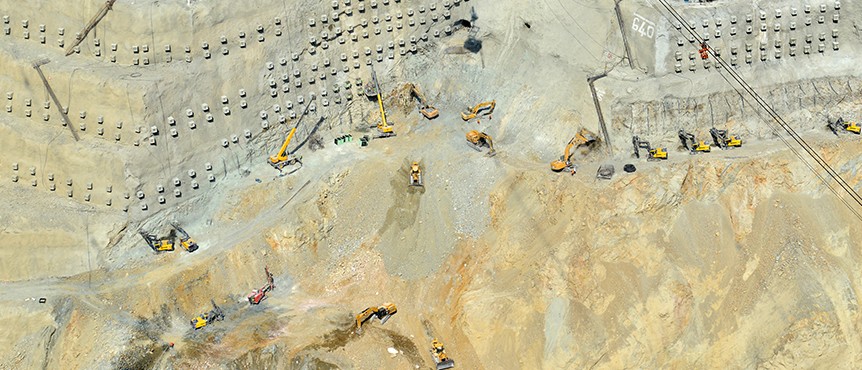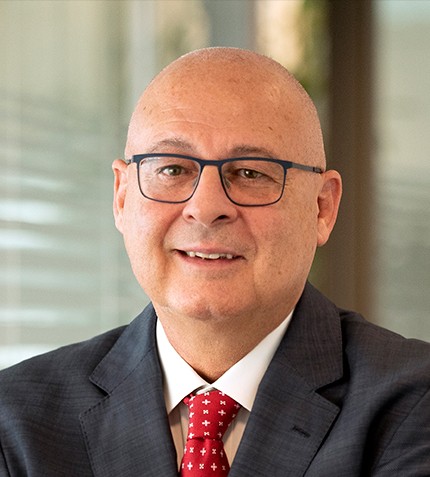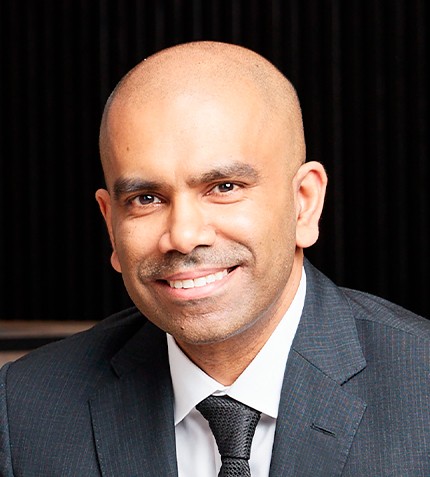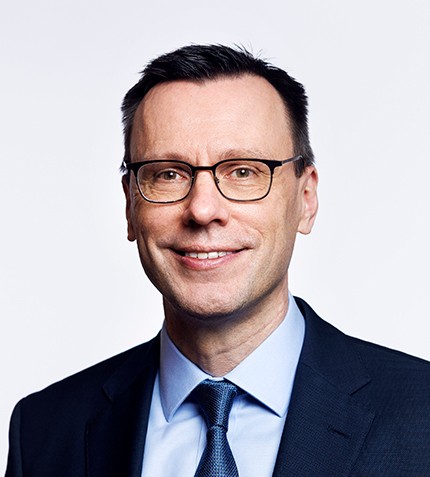Global Business Reports provides its take on the prospects for Turkey’s mining industry, based on exclusive interviews with some of the sector’s leading players.
Turkey’s Mining Industry Looks to the Future with Hope for an Easier Ride

IMAGE: Courtesy of Epiroc
Sitting astride a significant portion of the Tethyan Metallogenic Belt, one of the world’s major metal producing areas, Turkey is rich in a wide array of minerals. Although Turkey occupies one of the most prospective parts of the belt, which stretches all the way to South-East Asia, its mining industry is young as its geology has only been seriously explored in the last approximately 20 years. According to MinEx Consulting, exploration spend in Asia Minor (Turkey and Greece) totaled US$0.96 billion from 2006 to 2016, lower than other regions in the Tethyan Belt like the Himalayas or Southeast Asia, but yielded far more discoveries: 22 (mostly in Turkey) compared to six and seven in the former mentioned regions, respectively. Furthermore, Asia Minor’s cost position is advantageous given that unit discovery costs for copper and gold, two of Turkey’s most important minerals, were just US$18/oz on average from 2006 to 2015, much lower than the world average of US$49/oz and lower than Eastern Europe at US$23/oz.
Following the privatization of Turkey’s mining industry, the progress made in the last 20 years is nothing short of spectacular, particularly in gold, Turkey’s leading mineral resource. In 2000, Turkey had no gold production but, by 2015, it had become Europe’s leading gold producer. Seven gold mines were built in this time, and all by Turkish construction companies. However, foreign mining companies, particularly from Canada and Australia, have been key to Turkey’s success, especially after a revision to the mining law in 2010, which made Turkey a foreign friendly mining jurisdiction. “Thanks to foreign mining companies we now have more skilled mining professionals and technical persons in Turkey. Turkey has become the biggest gold producer in Europe because of foreign investment and it benefits greatly from mining activities and operations,” remarked K. Soner Koldas, country director at Pasinex, which has discovered the richest zinc deposit in the world near Adana, southern Turkey.
Shifting Dynamics: From Foreign to Domestic Capital
However, once the darling of foreign investors, there has been a substantial decline in positive sentiment towards Turkey’s mining regime. According to the Fraser Institute’s 2016 annual survey of mining jurisdictions, Turkey fell 16 points in the Institute’s policy perception index, which ranks jurisdictions on the extent to which government policies encourage or deter investment. Turkey fell from 49th position out of 105 jurisdictions in 2015, to 78th as a result.
A key reason for this fall in the rankings has been the challenges experienced in obtaining permits, emanating from a decree in 2012, which stipulated that any applications to use governmental lands must go through the prime minister’s office. “The situation has not changed and it is one of our main challenges as without a permit you cannot do drilling and expand your mining operation. It used to take a couple of weeks but now it takes years; it is a terrible situation and we hope that it will change after the elections in Turkey in June 2018,” remarked Koldas.
Furthermore, investors must handle a dizzying array of permits and licenses – 20 at last count. These factors, along with lower commodity prices since 2014, have dampened both exploration and foreign investment into Turkey’s mining industry. Nevertheless, there has still been much activity in the industry over the last few years. As Nezih Doğu, country manager of testing and analysis provider Bureau Veritas, remarked: “Our industry does not necessarily depend on foreign investment. There are serious local players in the field with considerably important projects. Turkey has much mining potential and it has a skilled labor pool.”
Whilst the industry has seen a decline in foreign investment, there have been large domestic investments, representing a shift in the sector’s dynamics compared with the last decade. Contrary to what some foreign investors might believe, the permitting challenges do not indicate that the government sees the industry as any less important than before. “The government is giving much more priority to mining overall. Also, two years ago, the government changed its mining strategy and coal mining has been given a lot of support. Banks are now giving more credit to coal projects and some coal mines have moved to construction stage. Construction companies have much capital and have been investing a lot
in mining. Also, due to new laws, large scale mining has been incentivized,” explained Prof. Dr. Güven ÖNAL, president, Turkish Mining Development Foundation.
Coal is highly strategic for Turkey as it forms a key element of the government’s efforts to reign in energy imports and thus help decrease Turkey’s chronic current account deficit. Four coal power plants are currently under construction, with two built recently by Sabancı in southern Turkey, and another by Aksa Enerji in Bolu province in the northwest. Turkey’s coal industry faces challenges, however, and there is an urgent need for technical expertise to get the most out of Turkish coal. “Compared to international standards, geology has not been very kind to Turkey. In the United States, Australia and China there are 5,000 to 7,000 kilocalories per tonne of hard coal, with undisturbed seams that go in one direction for kilometers,” remarked Ulrich Ruppel, deputy general manager DMT Turkey Branch. “Only in the Black Sea region is there hard coal at 4,000 to 6,000 kilocalories but the mines there, owned by state-owned company TTK, involve very difficult, fully mechanized, longwall mining due to the tectonical structure of the seams.”
Important large-scale domestically financed projects in other areas have also been announced recently, including Cengiz Holding’s US$1.1 billion investment in southeast Turkey, close to the Iraqi border, in a phosphate complex due to open in 2018. Cengiz has benefited from tailor made government incentives for this project. The complex will make different types of fertilizers and Cengiz will also recover copper, gold, cobalt and nickel from the project. Also, Ciner Group has announced a £1.5 billion investment in a trona solution mine in Kazan, near Ankara. The project will meet 14% of the world’s natural soda ash consumption, making Turkey the world’s largest producer, and export volumes are expected to reach US$600 million per year.
Turkish Gold Still Shines
Turkey, and Anatolian civilizations before it, has long had a love affair with gold, stretching back to the time that merchants pioneered the use of gold coins in ancient Lydia. Today, gold plays an important role in Turkish cultural and economic life, being used in weddings as a medium of exchange, often in jewelry, but also as a unit of account. For example, in Istanbul’s famous Grand Bazaar rents are often priced in gold. Furthermore, gold plays an important part in Turkey’s financial system and, at the end of 2013, commercial banks held approximately 250 metric tonnes (mt) of gold, equivalent to US$10.4 billion. Overall, Turkey is the fourth largest consumer of gold in the world. In terms of its own resources, total workable gold reserves in Turkey stand at around 840 mt but geological estimates suggest up to 6,500 mt.
However, gold mining’s potential has been curtailed by the permitting challenges Turkey imposes, which have subdued exploration activity in the last few years. “Nowadays, more demand is coming from existing companies expanding their projects or big projects reaching the development phase or projects seeking international finance. The major companies and projects are doing well and they continue to invest,” commented Serhat Demirel, operations manager, Golder Associates.
Indeed, existing gold miners have certainly been busy in the last two years. For example, Öksüt Sanayi ve Ticaret Madencilik, a 100% owned subsidiary of Canadian based Centerra Gold, is due to start construction at its gold mine in Kayseri province later this year. The deposit holds approximately 26.1 million oz. of ore at a grade of 1.4 g/mt gold, containing around 1.2 million oz. of gold, which will be mined and stacked over a mine life of eight years from two open pits – the Keltepe pit and the smaller Güneytepe pit.
Meanwhile, Anagold Madencilik (a JV between Canadian Alacer Gold and Turkish Lidya Madencilik), which owns the Çöpler gold mine, the second largest gold reserve after Tüprag’s Kışladağ project, has embarked on a major expansion project. Along with its open-pit, heap-leach operation that produced gold from oxide ore, the Çöpler deposit also possesses refractory sulfide ore that requires a different processing solution. Anagold completed a definitive feasibility study in June 2014, which recommended the treatment of the sulfide ore via pressure oxidation and, in May 2016, construction started on the project, with first gold pour expected in Q3 2018.
There have also been some ownership changes including Tümad Madencilik’s part of Turkish conglomerate Nurol Holding, an inheritance of the Lapseki project from Australian company Chesser Resources in 2014. The project has a low sulfidation vein system and is now in production. Tümad also has a mine license of 73,950 million m2 for or the Balıkesir İvrindi project, which is now at investment stage and based on the feasibility study has 600,000 oz. of gold reserves.
Alongside the construction projects of Öksüt and Anagold, there are some highly promising development projects waiting for lift off but dependent on obtaining permits. For example, Canada-based Alamos Gold has completed positive feasibility studies for the Ağı Dağı and Kirazlı projects in Çanakkale Province on the Biga Peninsula. Both projects are expected to be stand-alone open-pit, heap-leach operations, with Kirazlı expected to produce an average of 104,000 oz/y of gold over a five-year mine life and Ağı Dağı 177,600 oz/y over a six-year mine life. The projects are at permitting stage, as is another project of Alamos, Çamyurt, for which a preliminary economic assessment in 2017 predicted 93,200 oz/y of gold over a four-year mine life. Due to its low capital and operating costs, Kirazli is one of the highest return, undeveloped gold projects in any gold price environment.
These projects suggest there is still much untapped potential for Turkey’s gold industry. As Erdem Tüzünalp, regional general manager, Turkey and MENA, at Epiroc summarized “(w)e still do not have a high enough level of exploration and there are social and environmental problems which means it is difficult to get permits. We know there are a lot of gold reserves, with some still waiting for permits.”
Getting the Turkish Public Onboard
All over the world, gold mining has faced public relations challenges, primarily because of the use of cyanide in the processing of gold. Public opposition has been particularly fierce in Turkey, reflecting the still very new nature of gold mining in Turkey, as well as the country being relatively densely populated. The experience of Tüprag, one of Turkey’s most respected mining companies, is indicative of the difficulty gold miners face, despite risks of cyanide contamination being very low. The company has had to conduct repeated environmental impact assessments (EIAs) for its Efemçukuru and Kızıldağ prospects before getting approval due to court interventions.
The industry has gradually learnt the techniques of successful public relations management, showing that it is possible to get the Turkish public on board with gold mining. Nevertheless, public perception is still one of the greatest risks gold miners face. In an effort to assuage public concerns, Tümad organized trips for locals near their Lapseki project to Koza Mining Company’s Bergama Ovacık gold mine, as well as Tüprag’s Efemçukuru gold mine. Bergama was the site of intense public opposition in the 1990s, including an invasion by 4,000 villagers in April 1994 and the mine was forced to close due to protests between August 2004 and May 2005. “Bergama is a very sensitive area due to the existence of high quality agricultural production there, such as olives, as well as seven or eight villages and the highway to Izmir being close. Therefore, it is a good example study on the environmental impact of gold mines, which is none. There is a conventional tailings dam with very low concentrations of cyanide. So, once we took people there, it helped a lot,” explained Cem Yuceer, coordinator, Tümad Madencilik.
Recently, gold mining in Turkey has been supported by financing from international financial organizations such as the European Bank for Reconstruction and Development (EBRD) and UniCredit Bank, which has helped underpin high standards for the management of social and environmental risks. With the help of the EBRD and two Turkish banks, Tümad has managed to secure a US$200 million credit facility for the İvrindi and Lapseki gold projects and Centerra Gold has received a US$150 million project financing term loan facility for the Öksüt project, with backers including the EBRD and UniCredit. As part of the financing for Öksüt’s project, biologists visited their project to identify endemic species and now there is a preservation program involving the collection of seeds and planting them elsewhere. Furthermore, as a result of EBRD’s funding of the İvrindi and Lapseki projects, Tümad will sponsor three high schools in different parts of Turkey focused on mineral resources and renewable energy. Tümad has committed to use local labor from the nearby villages in its mines, with training provided so that they will be able to work for the company over a long-term period.
“Typically, when companies do EIAs, they should conduct a public participation meeting and include some social information to the EIA report, but social impact assessment is not regarded as importantly in Turkey, so the country is lacking in this regard,” according to Demirel. “When we do GAP analysis we find the missing elements are mostly acid rock drainage, groundwater impacts assessment, social studies and biodiversity studies,” Demirel continued, highlighting how norms in Turkey still fall short of international standards.
A Maturing Industry Seeks to Get Back on Track
Overall, whilst Turkey’s mining industry was in its infancy from 2000 to around 2014, it has now reached its adolescent years. There may have been growing pains along the way, but Turkey’s industry is maturing and looking to the future. Permitting challenges notwithstanding, the government has put in place some highly attractive incentives for foreign investors. These differ depending on a region’s poverty level, with certain regions having more advantages. Companies can deduct part of their CAPEX from future revenues and royalties are adjusted with respect to commodity prices; a helpful measure to mitigate against price volatility. Turkey has also designed a scheme to provide tailor-made incentives programs for any investments over US$100 million.
For miners, Turkey can still be the land of the possible. Speaking of Tümad’s Lapseki project, Yuceer commented: “From November 2014 to end of December 2017, we completed the environmental impact assessment, all permitting (such as forestry and construction), detailed feasibility, financing and construction and started pouring gold. This should stand as a message to potential domestic or foreign investors of what can be achieved in a short time period. Permitting need not be the main barrier, provided it is managed well.”
There is also widespread acknowledgement that the government is listening to the industry’s concerns about permitting and hope that the situation is now improving. “I am bullish on the future for mining in Turkey. We have a pro-mining government and support from mining department MIGEM,” summarized Koldas of Pasinex.










